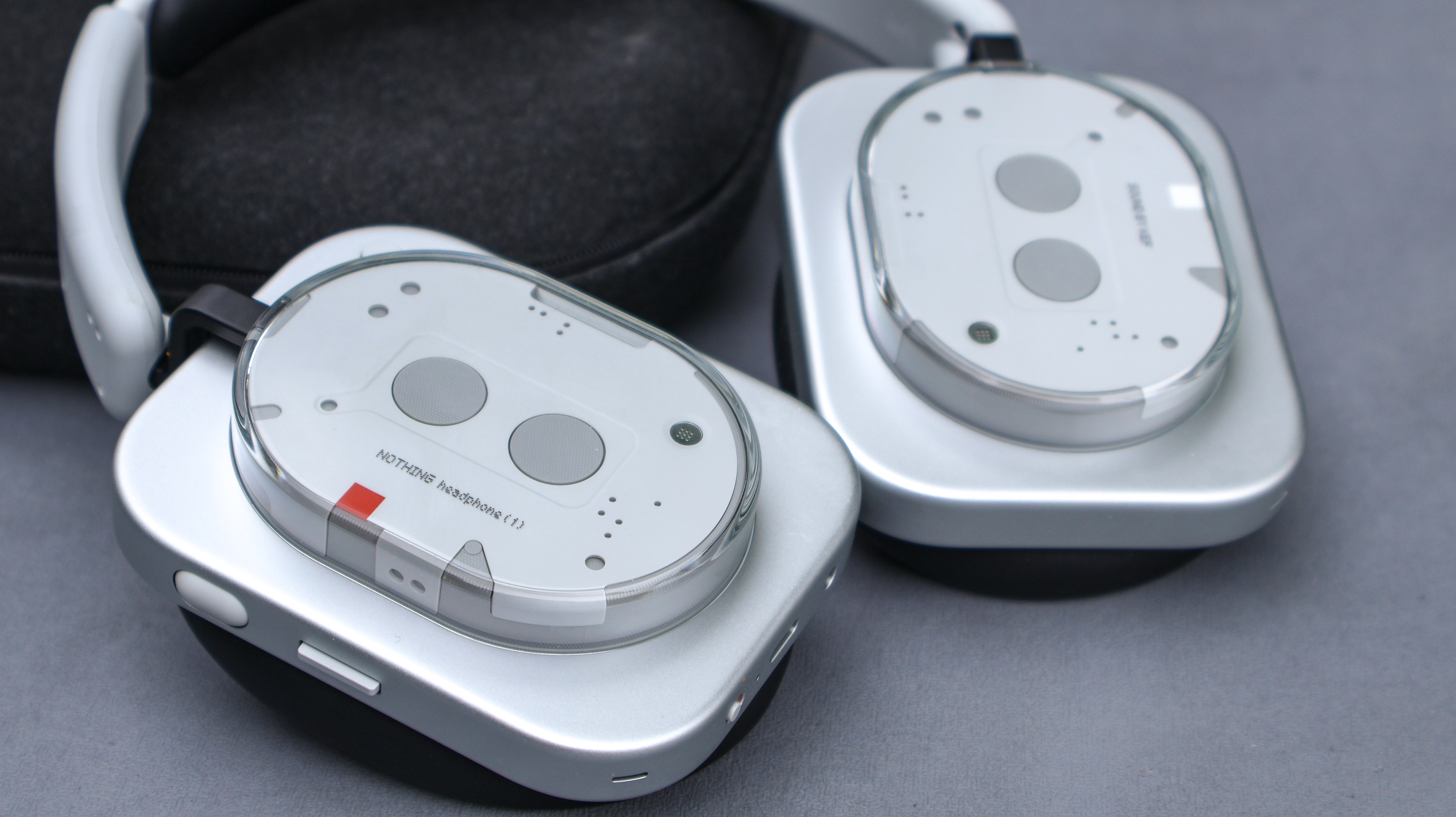Best 75-inch TVs of 2025: Tested and reviewed
From Mini-LEDs to OLEDs, these are the best 75- and 77-inch TVs you can get right now
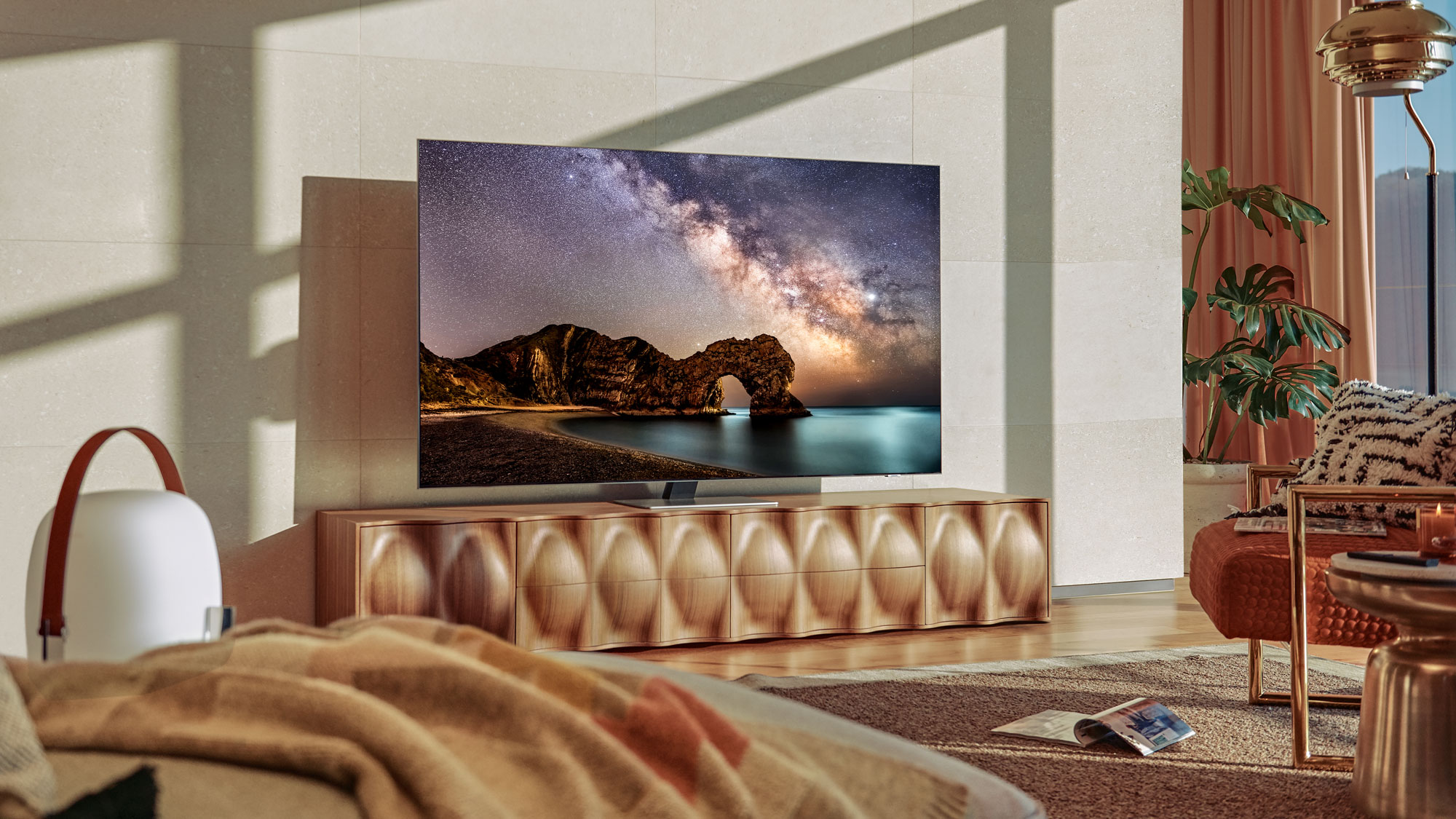
If you're shopping for one of the best 75-inch TVs (or one of the best 77-inch sets), I have good news: You've got a ton of great options.
I've been testing and reviewing TVs for over ten years, so I've had a front-row seat to the rise of big-screen TVs. These days, more people are upgrading to 75- and 77-inch models than ever before.
While many of these TVs are priced rather high due to their size, you can still spend wisely and walk away with one of the best 75-inch TVs for your lifestyle and living room setup.
The 77-inch LG C5 OLED is our pick for the overall best 75-inch TV in this size range, but there are plenty of other options to choose from that are far more affordable.
The quick list
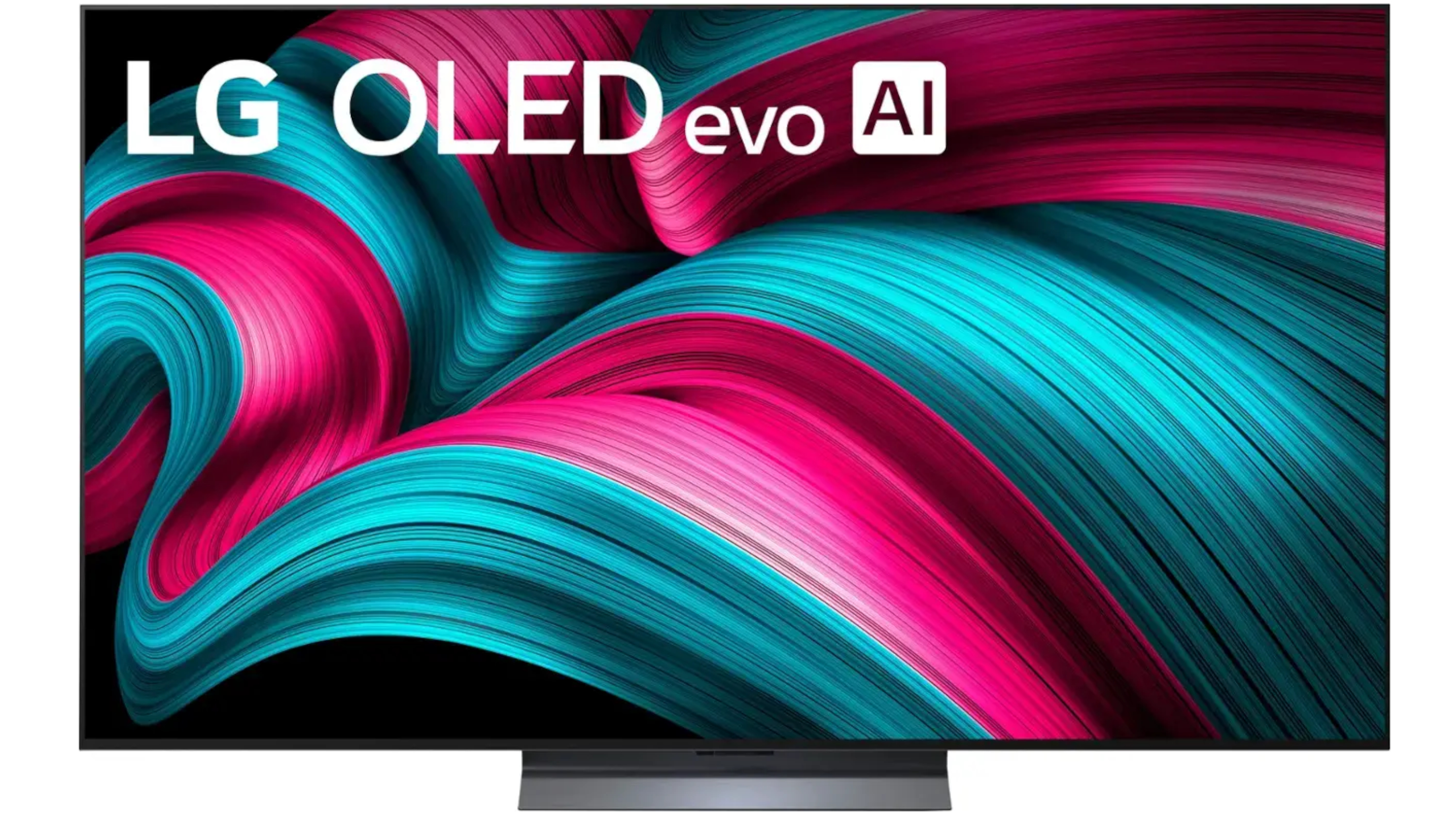
The LG C5 is the all-around best TV in the 75- to 77-inch size range. It delivers incredible performance, comes with a long list of features for gaming and more, and doesn't cost as much as most high-end flagships.
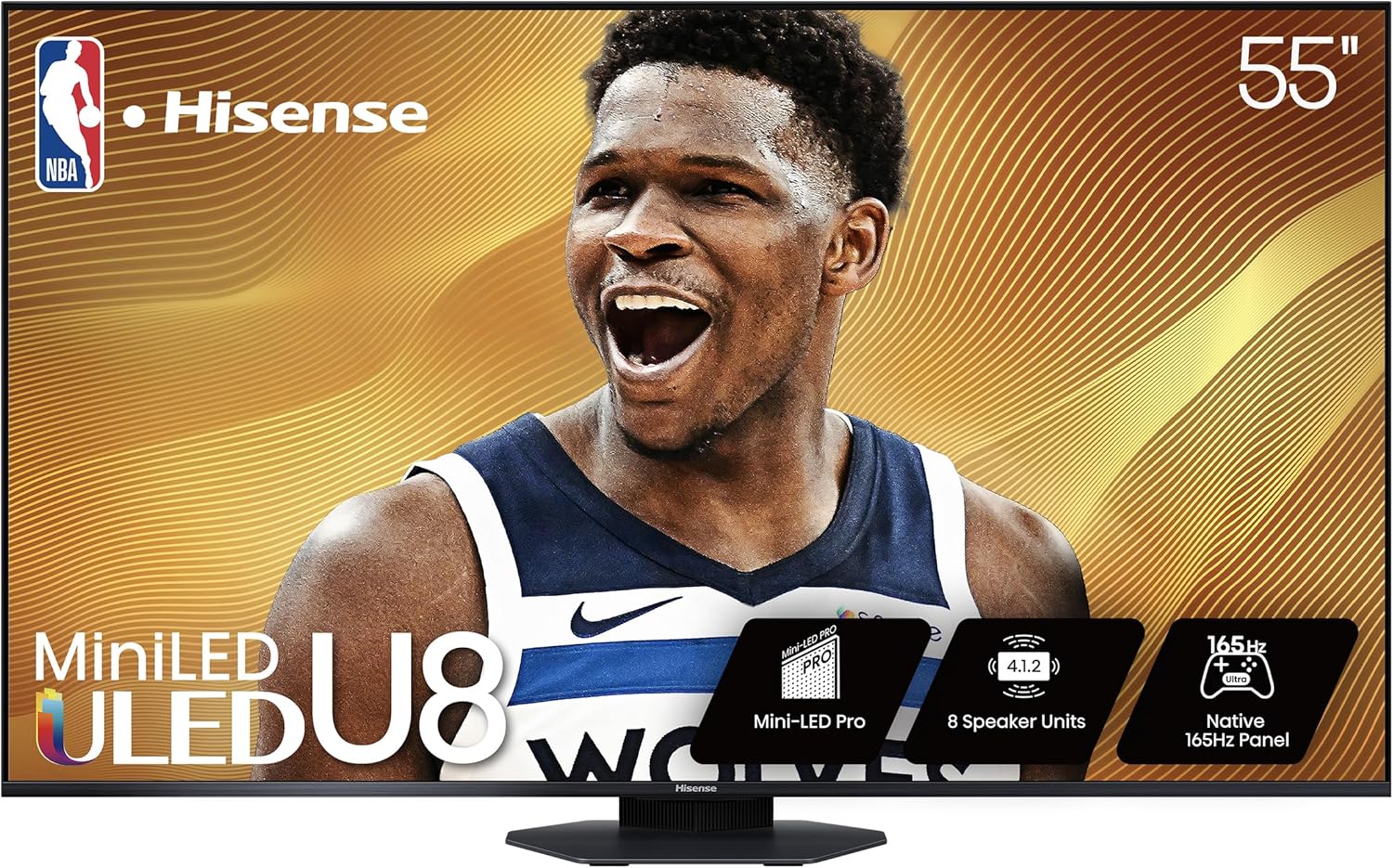
The Hisense U8QG is a blazingly bright Mini-LED TV with a great set of features for the price. It offers terrific performance for a reasonable price when compared to other 75-inch flagship models.

If you're on the hunt for an affordable 75-inch TV that still has the capacity to impress, look no further than the TCL QM6K. This Mini-LED TV is a great compromise for budget-conscious shoppers.

The Samsung S95F is one of the best OLED TVs ever made. Its picture quality is jaw-dropping and it's packed with features. The 77-inch version is very, very pricey.
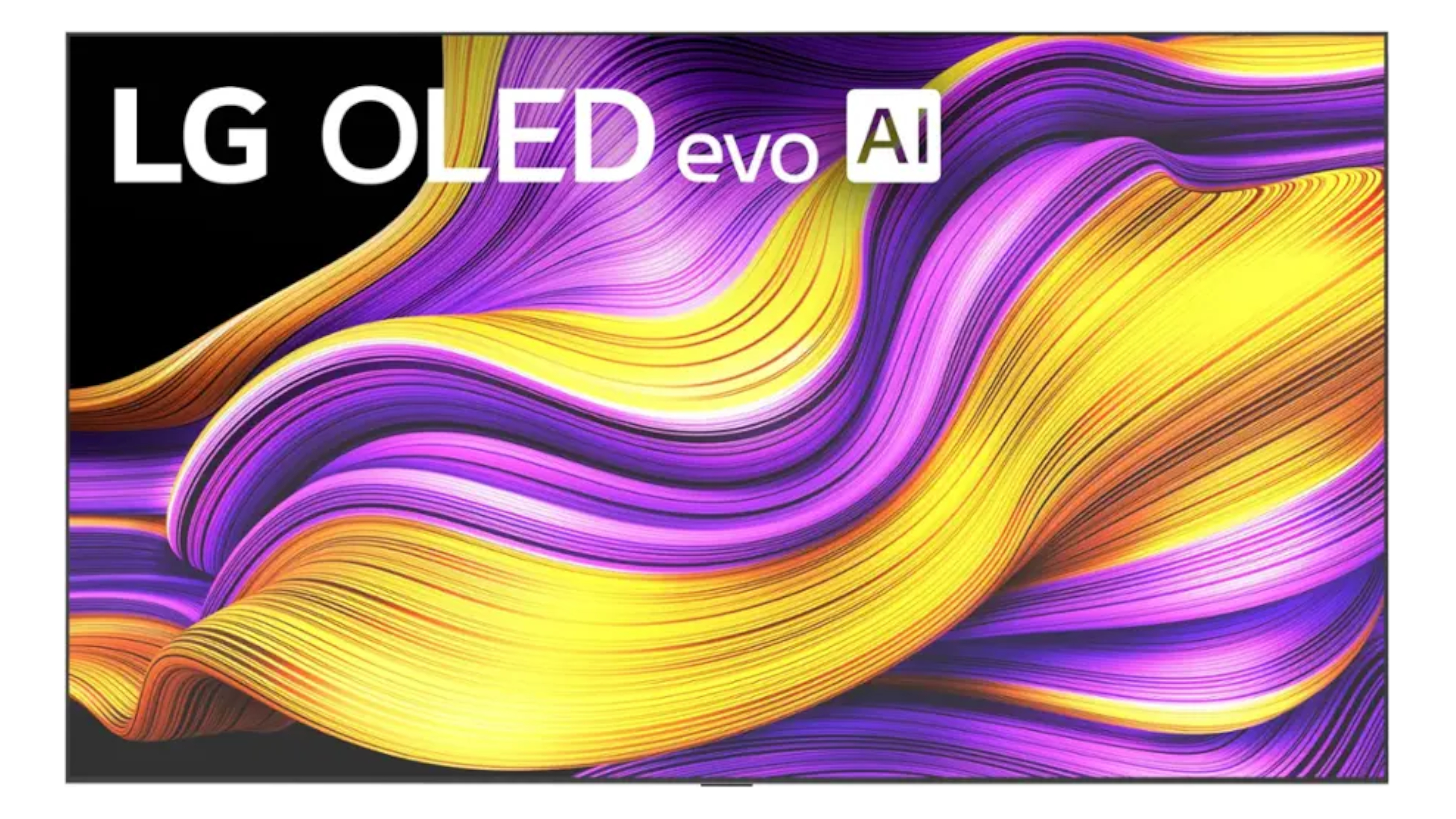
The LG G5 OLED is one of the best gaming TVs ever made. It's also one of the best OLED TVs ever made, too. Just keep in mind that its stand is sold separately.

It's eye-wateringly expensive, but the Sony Bravia 9 is our top pick for a 75-inch Mini-LED TV. It features incredible HDR brightness, color volume and backlight control.
About the author

My name is Michael, and for over a decade, I’ve been testing and reviewing TVs. In fact, I’ve evaluated well over one hundred TVs in my day, and many of them have been 75 inches and above. I know what sets a good 75-inch TV apart from a bad one, and since more people are buying big-screen TVs than ever before, I've been diligently tracking the 75- to 77-inch TV market.
The best 75-inch TVs you can buy today
Why you can trust Tom's Guide
Best 75-inch TV overall


1. LG C5 OLED
Our expert review:
Specifications
Reasons to buy
Reasons to avoid
Our current pick for the best 75-inch TV is actually a 77-inch model. The LG C5 OLED delivers jaw-dropping picture quality, comes with an array of streaming- and gaming-related features, and compared to other, high-end TVs, comes in at a relatively reasonable price.
It comes with all of the benefits of OLED display technology: perfect black levels, pixel-level dimming for precise contrast control and some of the widest, most-accommodating viewing angles you can buy.
Think of the C5 as a Jack of all trades. Its picture is punchy enough for daytime viewing but looks downright incredible in dimly lit or dark rooms. Its wide viewing angles are especially nice to have at this size point, as it enhances group viewings. Movies will look accurate and cinematic, while gamers will get one of the most complete selections of gaming features available at this price point.
There are more affordable 75- and 77-inch TVs on this list and pricier sets, too, but the C5 represents the best blend of performance and value in this size range. It’s the TV I’m most likely to recommend this year for all TV shoppers— not just those shopping for a 75- to 77-inch TV.
- Read our full LG C5 OLED review
Best 75-inch TV under $2000
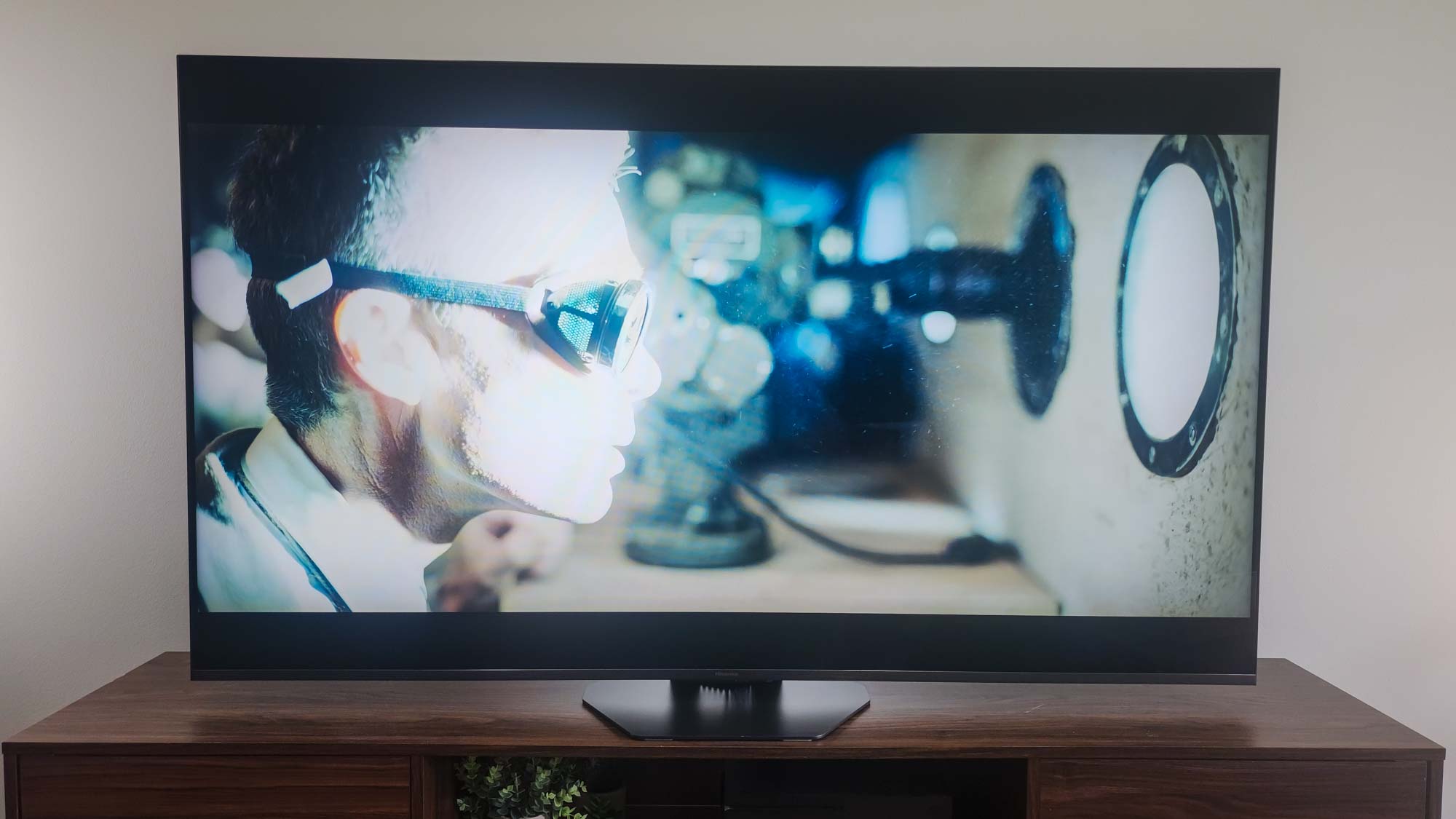

Specifications
Reasons to buy
Reasons to avoid
If you’re in the market for a 75-inch TV and want to keep costs down without sacrificing too much when it comes to performance and features, take a look at the Hisense U8QG. Right now, it’s the best 75-inch TV under $2,000.
The U8QG’s most impressive feature is its fantastic brightness. At close to 4,000 nits of HDR highlight brightness, the 75-inch version of the U8QG gets brighter than any in its class. This makes it a great fit for folks with bright living spaces, or for people who do a decent amount of viewing during the day.
Hisense’s picture processing and backlight control aren’t as impressive as what you’ll see on the 75-inch Sony Bravia 9 (our pick for the best 75-inch Mini-LED TV), but the U8QG is far more affordable than Sony’s top-tier Mini-LED TV.
I suspect that most gamers will appreciate the U8QG’s three HDMI 2.1 inputs (as well as its support for 4K gaming at up to 165Hz), but unlike many 75-inch TVs in its class, it’s missing a fourth HDMI port. Fortunately, the U8QG’s list of gaming features is fairly extensive.
- Read our full Hisense U8QG review
Best 75-inch TV under $1000
Specifications
Reasons to buy
Reasons to avoid
The 75-inch TCL QM6K is the best 75-inch TV under $1,000. Thanks in part to Mini-LED backlighting, this TV is a great choice for those who are prioritizing affordability but who nevertheless want to be impressed with the picture quality of their new TV.
The QM6K’s above-average brightness makes it a great choice for daytime TV-watchers. In addition, its Mini-LED backlighting allows for a prettier presentation when you compare it to cheaper 75-inch TVs with standard LED backlighting. You’ll appreciate having Mini-LEDs on movie nights in particular.
There are a handful of very useful gaming features here, too, and the QM6K arrives with an easy-to-use smart platform in Google TV. There are better-performing TVs on this list, but the QM6K is tailor-made for folks who want to prioritize affordability along with a big screen.
- Read our full TCL QM6K review
Best 75-inch OLED TV
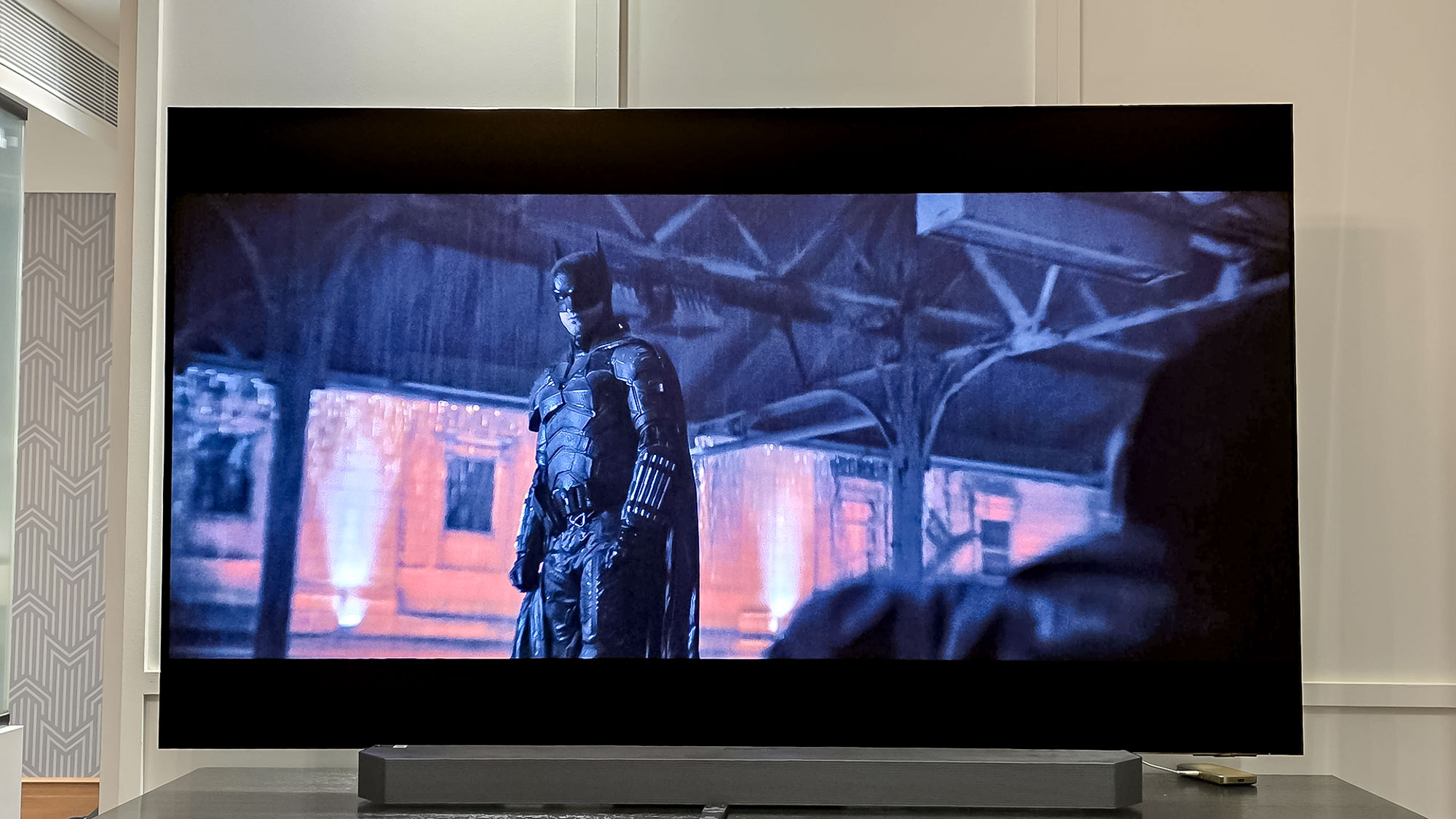

Specifications
Reasons to buy
Reasons to avoid
Samsung’s top OLED TV is the S95F. The 77-inch version of the S95F is one of the best TVs money can buy in the 75- to 77-inch size range.
An argument could be made that the LG’s flagship G5 OLED edges out the S95F in the OLED class, but the S95F’s incredible color volume puts it over the top (as well as the fact that the S95F arrives with a stand in the box while the G5 does not).
The S95F’s HDR highlight brightness is jaw-droppingly good. At over 2,000 nits, everything from distant city lights to dapples of sunlight on the ocean look lifelike. The display’s color-boosting quantum dots — something you won’t find with the LG G5 — is what gives the S95F an edge when it comes to color.
There’s no way around it: the screen’s matte finish is divisive. In brighter rooms, the anti-reflective properties scatter light in such a way that raises black levels and flattens the image. If you’re worried about this, I would recommend taking a closer look at the LG G5, whose screen is glossy and richer-looking in bright rooms, but doesn’t handle direct glare as well.
Almost every gaming feature one could want is accounted for, but A/V enthusiasts should take note: Like all Samsung TVs, the S95F does not support Dolby Vision, the most popular enhanced HDR format. I suspect that most people won’t mind this snub, as the S95F looks sensational in HDR, but if you’re collecting features, keep in mind that Dolby Vision isn’t here.
- Read our full Samsung S95F OLED review
Best 75-inch TV for gaming
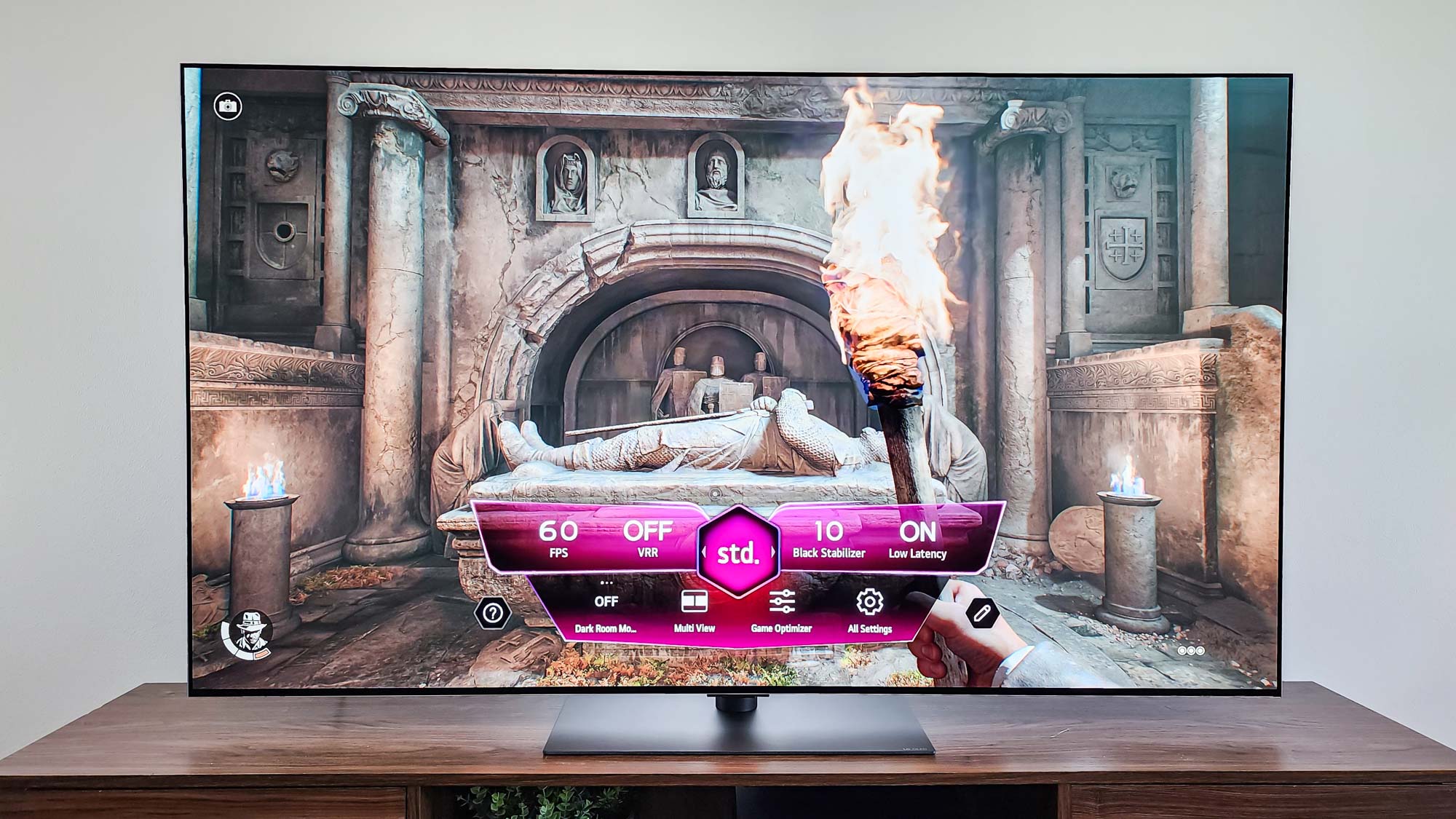

Specifications
Reasons to buy
Reasons to avoid
The best all-around gaming TV in the 75- to 77-inch size range is the 77-inch LG G5. As one of the priciest TVs on this list, it’s not everyone’s cup of tea.
If you want to save a substantial amount of money while getting the next-best option, I recommend going with the 77-inch LG C5 instead. It comes with nearly all of the same gaming features as the 77-inch G5.
All four of this G5’s HDMI 2.1 inputs support 4K gaming at up to 165Hz. Consoles can only reach 4K/120Hz, so the G5 has you covered there. The 165Hz spec is relevant for those who want to link up the G5 to a gaming PC.
Among the lengthy list of gaming features are the following: AMD FreeSync Premium, G-Sync compatibility, sub-10ms input latency and LG’s Game Optimizer mode.
And, seeing as how the LG G5 is neck and neck with the Samsung S95F for top-OLED honors at the 77-inch size point, you can count on its performance being outstanding, too.
Keep in mind that the G5 doesn’t arrive with a stand, as the TV was designed for wall-mounting first and foremost. You’ll have to pay for it separately.
- Read our full LG G5 OLED review
Best Mini-LED 75-inch TV
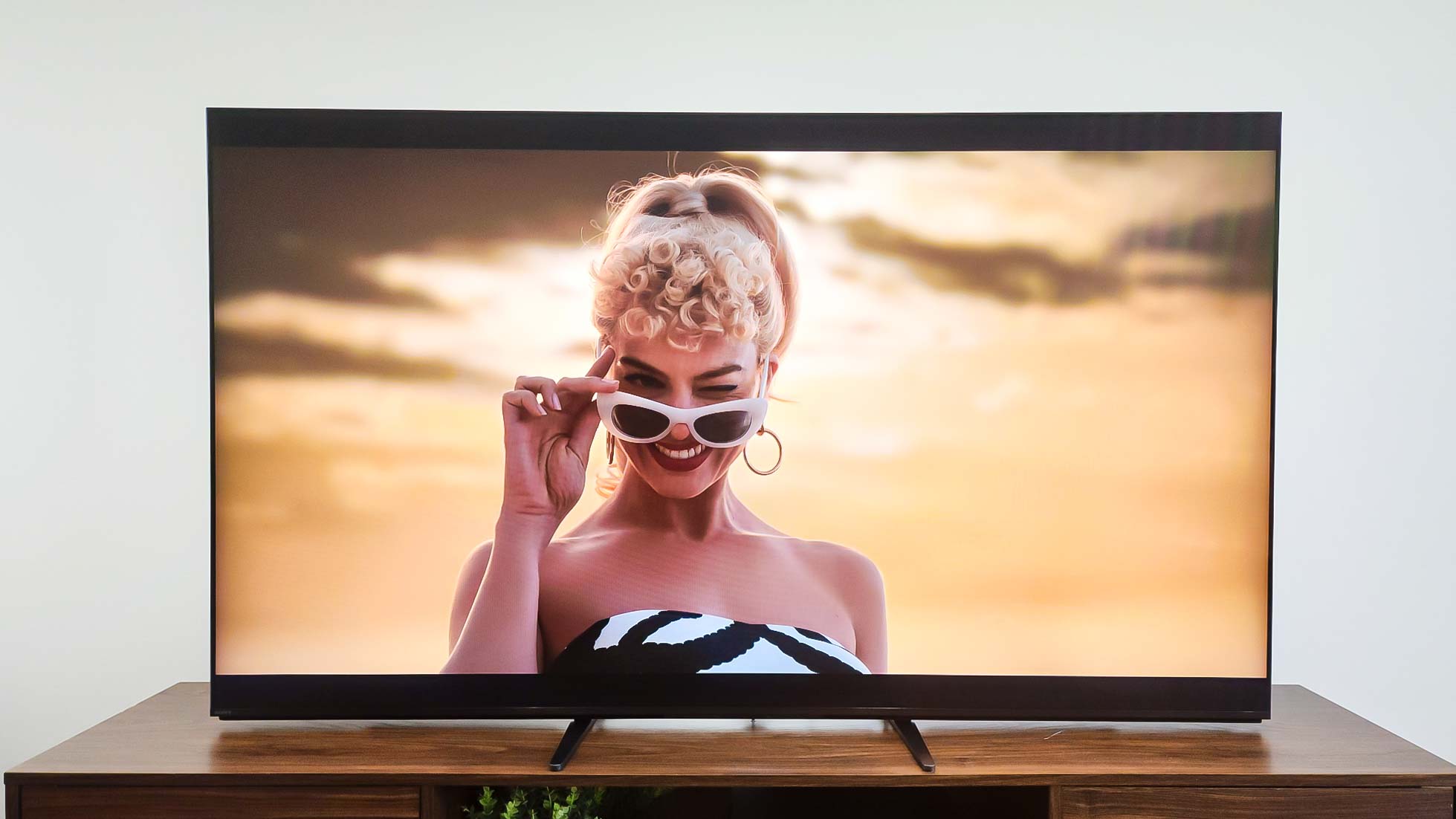

Specifications
Reasons to buy
Reasons to avoid
The Sony Bravia 9 is the best 75-inch Mini-LED TV you can buy right now. It costs more than other Mini-LED TVs on this list (the Hisense U8QG and the TCL QM7K), but its picture quality is a step above those sets.
Sony's excellent picture processing, backed by its XR Processor, makes everything from sub-4K streaming content to HDR Blu-rays look terrific. It's an incredibly bright TV, which helps it overcome glare in bright rooms, but its best quality is its superb local dimming. The Bravia 9's backlight control is so good that it often appears OLED-like in its presentation.
You're getting two HDMI 2.1 inputs with the Bravia 9, which makes it less flexible than some of its competitors. Nevertheless, most of the highly sought-after gaming features are accounted for, including VRR, ALLM and support for 4K gaming at 120Hz.
If you’ve got your eye on a 75-inch Mini-LED TV and you want to keep costs down, you’re better off choosing between the Hisense U8QG and the TCL QM7K. If you’re a picture purist and want the best possible Mini-LED performance, it might be worth spending up on the Bravia 9.
- Read our full Sony Bravia 9 review
Our 75-inch TV test results
If you want more context in the technical side of how these TVs perform, I’ve rounded up some of the key results from our lab testing to help you compare each model.
TVs | Peak Brightness (nits) | Delta-E (lower is better) | Rec. 2020 Gamut Coverage | Input Lag |
|---|---|---|---|---|
LG C5 | 1,165 | 1.3 | 76.18% | 9.2ms |
Hisense U8QG | 3,916 | 2.4 | 83.98% | 9.7ms |
TCL QM6K | 688 | 1.0 | 71.23% | 13.1ms |
Samsung S95F | 2,138 | 1.2 | 90.26% | 9.5ms |
LG G5 | 2,296 | 2.0 | 82.42% | 9.2ms |
Sony Bravia 9 | 2,713 | 1.8 | 78.02% | 17ms |
Peak brightness is exactly what it sounds like: a measurement of how bright the TV gets while receiving an HDR signal. This test involves measuring a 10% white window, so it more accurately describes highlight brightness, not the average brightness of the full picture.
Delta-E is a measurement that describes color error, with a lower number representing a more accurate average. A Delta-E of below 3 is considered a degree of error below what most people would be able to perceive with their naked eye.
Rec. 2020 (also known as BT. 2020) is an international color space standard for newer displays. The percentages in this column describe how much of that color space these TVs are capable of covering.
How we test 75-inch TVs
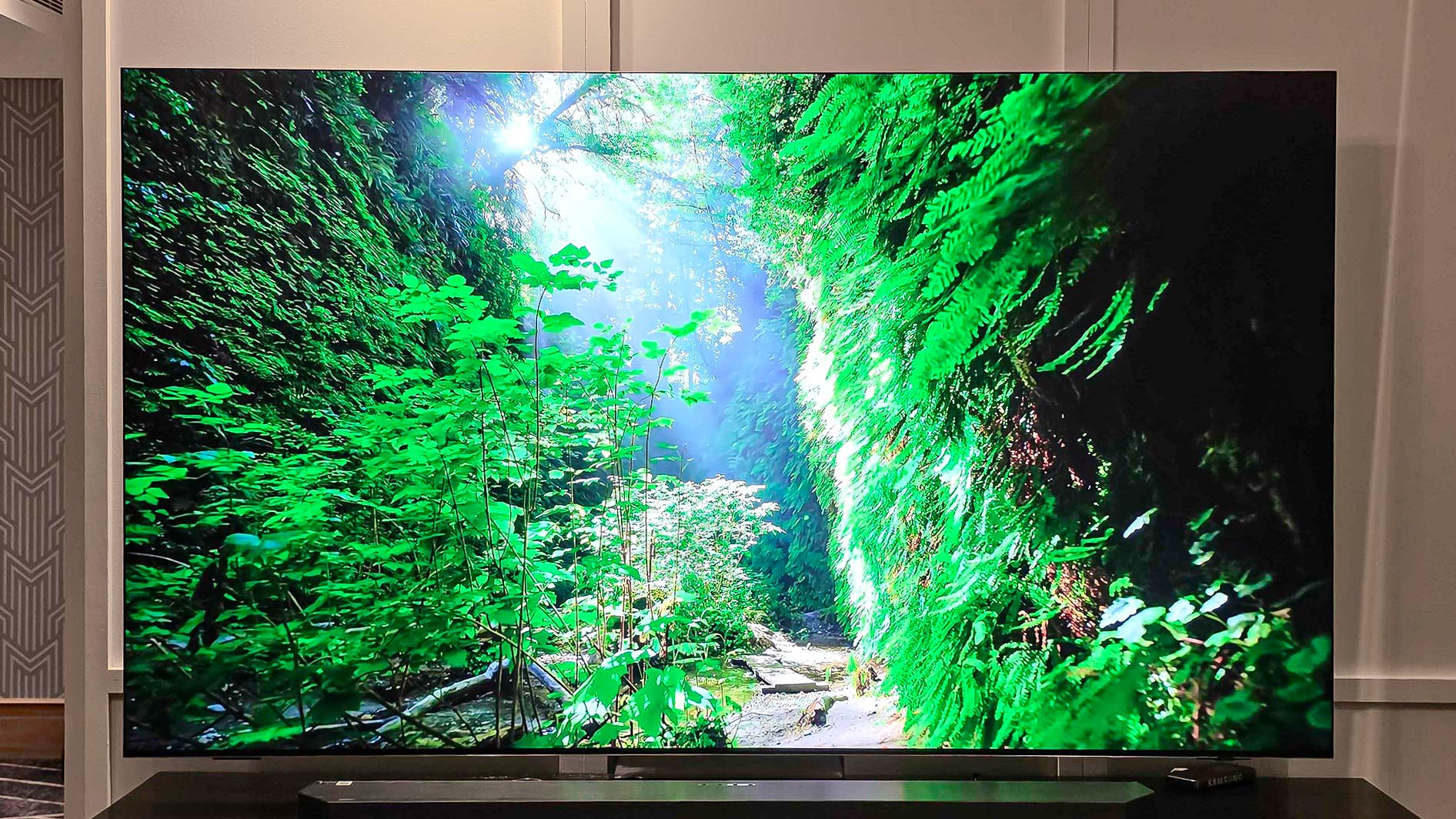
A lot of fancy display-testing hardware is involved with our TV-testing procedures. My colleagues and I use this equipment to measure a 75-inch TV's brightness, color accuracy and more. After running these tests, I do what anyone would do with a new TV: I watch it.
My office is full of movies on Blu-ray discs, but I also have a handful of discs with content designed specifically for TV-testing. I often pick movies and shows that feature scenes that are notoriously difficult for TVs to depict accurately.
I don’t shy away from watching basic cable or run-of-the-mill YouTube videos, either, as it helps to get a sense of how these sets perform under everyday circumstances.
Once we’re ready to publish a TV review, I either ship the TV in question back to the brand who lent it to me, or I donate the TV in the event that we purchased it ourselves.
Frequently asked questions
Do you really need a 75-inch TV?
The ideal viewing distance for a 75- or 77-inch TV is between 8 and 9 feet.
Consider a smaller TV if you intend to sit closer than 7 feet away from your TV at home. While bigger screens might seem inherently better, you don’t necessarily need a 75- or 77-inch TV if you're seating area is closer than 7 feet from the screen. Instead, why not put the extra cost towards a better-performing TV in a smaller size, like one of the best 65-inch TVs?
Consider a larger TV if you sit further than 10 feet away from your TV, you may want to consider one of the best 85-inch TVs that work within your budget. There's a good chance you'll want the extra screen real estate in order to maintain an immersive experience, especially with guests in the room.
Why is it hard to find 70-inch TVs?
For all intents and purposes, 55, 65, 75 and 85 inches can be considered the standard set of sizes for TVs. 70-inch TVs are not nearly as prominent.
Some entry-level and mid-range OLED TVs arrive in 42- and 48-inch models. And, as mentioned above, OLED TV panels are currently manufactured in 77- and 83-inch options rather than the 75- and 85-inch LED standard.
The vast majority of 70-inch TVs, however, are low-end models that typically offer less-than-stellar performance. Many of them are exclusive to various retailers around the holiday shopping season.
Needless to say, these ultra-cheap, 70-inch TVs don't usually receive our recommendation. Instead, we recommend people in the market for a 70-inch TV look at 75-inch models, which come in a wider range of performance and price.
How much should you spend on a 75-inch TV?
As a TV expert who's seen the best of the best and the worst of the worst, I wouldn't spend below $600 on a 75-inch TV unless there's a particularly lucrative discount affecting its price. Ultra-low prices are tantalizing, but at this size point, anything below $600 begins to scrape the bottom of the barrel.
Expect to spend between $700 and $1,200 on mid-range 75-inch TVs and between $1,200 and $2,000 on upper-tier mid-range models. High-end TVs in this size range can cost anywhere between $2,000 and $4,000.
What's the difference between 75- and 77-inch TVs?
The difference between 75- and 77-inch TVs is about two inches (sorry, I couldn't help myself).
Currently, the only 77-inch TVs on the market are OLED TVs. This is because OLED displays are manufactured at 77 inches rather than 75 inches, like most LED TVs.
This also plays out around the 85-inch size point. Many LED, QLED and Mini-LED TVs come in an 85-inch version, but their OLED counterparts are exclusively manufactured at 83 inches instead.
Get instant access to breaking news, the hottest reviews, great deals and helpful tips.

Michael Desjardin is a Senior Editor for TVs at Tom's Guide. He's been testing and tinkering with TVs professionally for over a decade, previously for Reviewed and USA Today. Michael graduated from Emerson College where he studied media production and screenwriting. He loves cooking, zoning out to ambient music, and getting way too invested in the Red Sox. He considers himself living proof that TV doesn't necessarily rot your brain.

